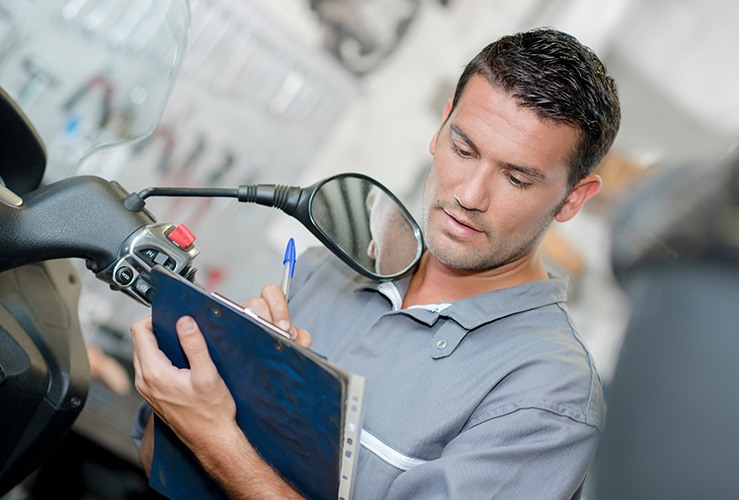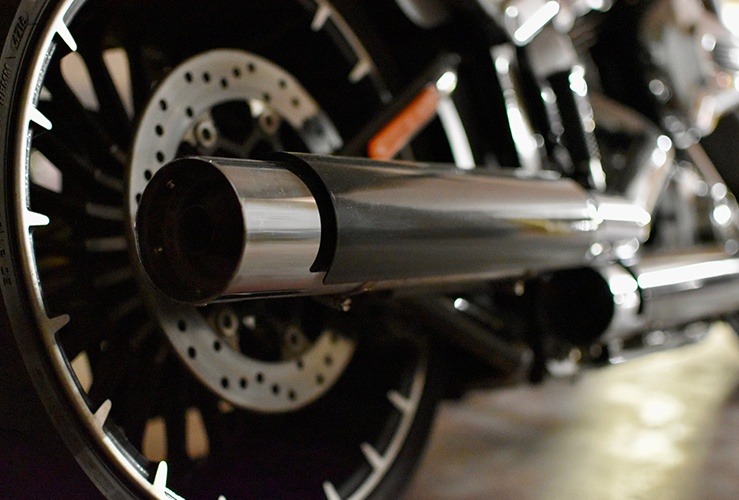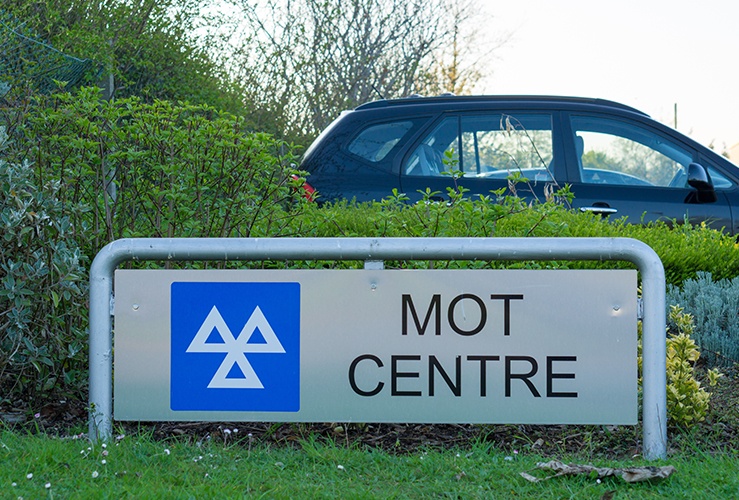All of your motorcycle’s critical components will be tested during your MOT. Learn what they are so you can address any issues ahead of the test, and get answers to FAQs like - How much does an MOT cost for a motorbike?
In the UK, the motorcycle MOT test ensures that every motorcycle used on public roads meets the minimum road safety and environmental standards, as stipulated by law. The test was named after the now-defunct Ministry of Transport, which was superseded by the Department for Transport.

When do motorbikes need an MOT?
As with cars, most motorcycles aged over three years must have an MOT test each year. Check your last MOT pass certificate to find out when your next MOT is due.
Riding your motorcycle without a valid MOT is classed as a serious offence under the 1988 Road Traffic Act. You could be fined up to £1,000, get 3 points on your licence, and even have your vehicle seized. Penalties are harsh because riding an unsafe vehicle puts both the rider and other road users at increased risk of injury or death.
Ideally, you would have your machine serviced before taking the MOT.
Here's what is typically checked during the motorcycle MOT test:
1. Lights and Electrical Equipment
- Headlights and Tail Lights: Checked for correct aim, operation, and condition.
- Indicators: Must work properly and flash at the correct rate.
- Brake Lights: Must illuminate when either the front or rear brake is applied.
- Reflectors: Red reflectors must be fitted and in good condition.
- Horn: Must be in working order - and be sufficiently loud.
2. Steering and Suspension
- Steering Bearings: Checked for excessive wear or damage.
- Forks and Handlebars: Examined for damage, corrosion, or incorrect alignment.
- Shock Absorbers: Must be secure, function correctly, and not leak oil.
3. Wheels and Tyres
- Tyre Condition: Checked for damage, bulges, or excessive wear.
- Tread Depth: Must have at least 1 mm of tread depth across three-quarters of the width of the tyre.
- Wheel Bearings: Must be secure and free from excessive wear.
4. Brakes
- Condition of Pads, Discs, and Drums: Examined for wear and tear.
- Efficiency: Brakes must meet performance standards when tested.
- Hydraulics: Checked for leaks and proper operation.
5. Frame
- The frame must not have excessive corrosion, cracks, or damage that could affect the motorcycle's structural integrity.
6. Exhaust System
- Condition and Security: Checked for leaks or excessive noise.
- Emissions: Older motorcycles must meet acceptable levels for exhaust emissions. For newer models, stricter standards may apply.
7. Fuel System
- Tank and Lines: Inspected for leaks or insecure components.
- Fuel Cap: Must close securely.
8. Seat
- Must be securely attached to the motorcycle.
9. Chain and Drive System
- Condition: The chain or belt must not be excessively worn.
- Tension: Must be correctly adjusted.
- Guard: If fitted, it must be secure.
10. Throttle and Clutch
- Throttle Operation: Must move freely and return to the closed position when released.
- Clutch Lever: Checked for excessive wear or looseness.
11. Side Stand
- Checked for security and proper operation, including the presence of a cut-off switch if fitted.
12. Registration Plates and Vehicle Identification
- Registration Plates: Must be present, legible, and conform to UK standards (correct size and spacing of characters).
- Vehicle Identification Number (VIN): Must match the vehicle’s records.
13. Noise
- The exhaust system must not produce excessive noise beyond legal limits.
14. Mirrors (if fitted)
- While not mandatory for all motorcycles, if mirrors are present, they should be secure and provide a clear view.
15. General
- The overall condition of the motorcycle is assessed for anything that may pose a safety risk, such as loose bolts, damaged parts, or sharp edges.
You can download the official Motorcycle MOT Checklist here (PDF).

What Happens If You Fail Your Motorbike MOT?
If your motorcycle fails its MOT, you’ll be given a refusal certificate (VT30) outlining the reasons your machine didn’t pass. You must address these issues and pass a retest before being able to legally ride your motorcycle on public roads again. As mentioned, riding a motorcycle without a valid MOT could lead to serious penalties, including a fine and points on your licence.

How much is a motorbike MOT?
An MOT test for a regular motorcycle costs £29.65.
How much is an MOT for a 125cc motorbike?
125cc motorbike MOT tests cost the same as both lower cc and higher cc machines - £29.65 per test.
The cost rises to £37.80 if you have a sidecar, since additional safety checks must be undertaken.
Here are the MOT test fees for different motorcycle types.
| Vehicle class | Age first MOT needed (years) | Maximum MOT fee |
Motorcycle (engine size up to 200cc) | 1 | 3 | £29.65 |
Motorcycle with sidecar (engine size up to 200cc) | 1 | 3 | £37.80 |
Motorcycle (engine size over 200cc) | 2 | 3 | £29.65 |
Motorcycle with sidecar (engine size over 200cc) | 2 | 3 | £37.80 |




